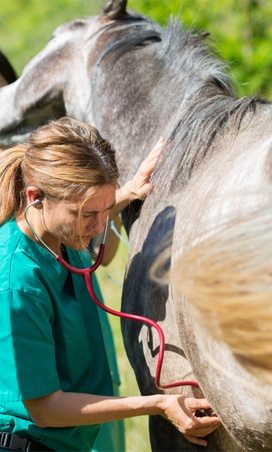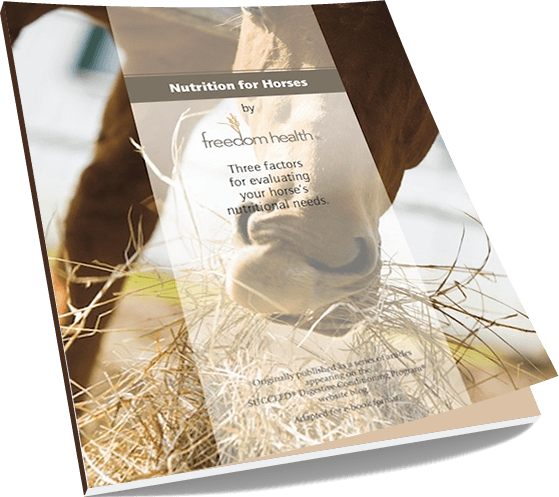In survey research conducted among race horse trainers in 2003, respondents were asked about the published incidences of gastric ulcers in horses. Generally, the participants were in agreement with the reports of 80% to 90% incidence, depending on the type of horse (race, show, specific breeds, etc.). However, these same trainers believed that the incidence of ulcers in their own barns was much lower.
Such appears to be the attitude of most horse owners and trainers. Horses with ulcers, colicky horses, or horses prone to digestive issues like diarrhea or inappetence are believed to be uncommon. Digestive tract disease states, such as colic and ulcers, while serious clinical conditions, are also induced states. Prior to reaching this state, the digestive system is in a state of imbalance that is almost unavoidable.
What many people may not realize is that their own horses – even the horses they consider to be healthy – are likely living in a constant state of digestive imbalance. That is, the horses’ digestive systems are less than optimally healthy in structure and function. Optimal health means the physical structure of the digestive tract is in good condition and functioning properly, at a cellular level on up.
Nature vs. Performance
Horses in nature have a lifestyle pattern very different from that of their modern, domesticated counterparts. But the design of the digestive system in a horse reflects the natural lifestyle and feeding patterns, and does not naturally accommodate current common feeding and care regimens.
- The relatively small stomach, which secretes acids continuously, is designed to accommodate a small and continuous flow of high fiber material – the result of constant grazing on grass. Without this constant grazing pattern, horse’s stomachs are left empty for long stretches, and the acids unbuffered.
- The large cecum, and the corresponding bacterial environment within, is designed to accommodate this high fiber diet as well. Horses, like people, cannot digest structural carbohydrate (fiber). The bacteria and other microbes in the cecum can, however. Thus, the fermentation of grass to produce VFAs is a significant aspect of normal digestion in a healthy horse.
How we feed horses is typically quite different than this model. Horses are commonly fed intermittently – two or three times a day – and their diets consist of large amounts of processed grain feed. The method of feeding and the nutritional makeup of the feed are both completely different.
Digestive Imbalance: The Consequence of How and What We Feed
One major consequence of modern feed practices is the high concentration of starch in the diet, which has a great potential of reaching the hindgut undigested. When this happens, the microbial fermentation process in the cecum produces lactic acid. This creates a more acidic environment in the hindgut (lowering the pH), resulting in a state of “hindgut acidosis.”
A high volume of lactic acid in the bloodstream may reduce the ability of muscles to clear lactic acid that builds as a result of anaerobic metabolism during exercise. This may, in turn, lead to a slower recovery from exercise or tying up. Hindgut acidosis is also known to lead to laminitis, colonic ulceration and potentially to colic.
Because this reflects an incongruity between the horse’s natural design and the conditions in which we place them, this condition is referred to as “digestive imbalance.”


FREE eBook:
Nutrition for Horses
Three factors for evaluating
your horse’s nutritional needs.
